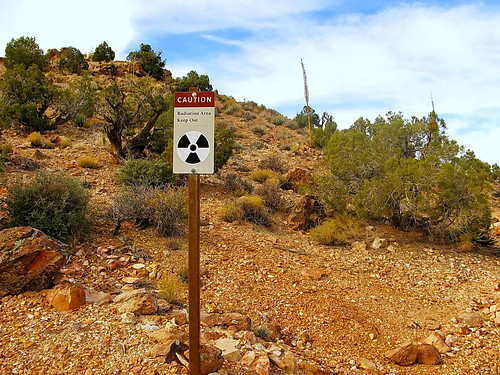美國亞利桑那州地方法院法官Campbell 29日駁回所有鈾礦業上訴,針對大峽谷旁百萬英畝公有地上,內政部頒布的20年鈾礦開採禁令,裁決為仍然有效。
環團與採礦業者的訴訟 原住民也聲援
法官裁定,禁令符合聯邦環境法律,為了保護科羅拉多河上游含水層和溪流以及大峽谷免於鈾礦開採廢料和損耗的威脅,規範範疇並不會太廣,也不如礦業者所主張的太過僵化。
亞利桑那州Havasupai部落和保育團體聯盟同聲支持法官裁決。Havasupai部落、大峽谷信託(Grand Canyon Trust)、塞拉俱樂部(Sierra Club)、生物多樣性中心和國家公園保育協會皆介入這個由礦業、鈾產業貿易協會和探礦者Gregory Yount所提起的訴訟,捍衛內政部保護大峽谷泉水溪流、野生動物和自然景觀免於鈾礦開採的威脅。
「Campbell法官瞭解大峽谷南部土地和資源的獨特性和重要性,這裡是我們原住民的家園,我們依賴這裡的水資源生活,這裡的河流會經過我們位於峽谷的家。」Havasupai部落領袖Rex Tilousi說。
公益法律事務所Earthjustice和西方採礦行動計畫,代表部落和保育團體參與訴訟。Earthjustice律師Ted Zukoski說,「大峽谷周邊充滿自然美景,當地水源、鹿、麋鹿、禿鷹和其他野生動物必須受到保護,免於大規模開採鈾礦所帶來的有毒汙染物和工業化威脅。」
採礦危及民生用水 禁令獲各界一面倒支持
2012年1月,內政部長Salazar頒布20年禁令,禁止新採礦權以及既有採礦權無有效許可的開採。採礦業則認為內政部的700頁環境評估有問題。
新的採礦計畫引發諸多抗議、訴訟和立法建議,因為許多新礦場威脅自然地區、破壞野生動物棲地和汙染或消耗水層,當地科學家、部落、地方政府和企業均表示支持內政部的保護政策。
亞利桑那、加州和內華達州的自來水公司擔憂,一旦大峽谷鈾礦獲核准,科羅拉多河可能有被污染的危險。這些地區有2500百萬居民依賴科羅拉多河作為民生和灌溉用水。
The U.S. Department of the Interior’s 20-year ban on new uranium mining claims across one million acres of public lands adjacent to Grand Canyon will stand, a federal judge in Arizona has ruled.
Judge Campbell of the U.S. District Court for Arizona summarized his Monday ruling dismissing all uranium mining industry claims by stating that the Secretary of the Interior had the authority to “err on the side of caution in protecting a national treasure – Grand Canyon National Park.”
The judge ruled that the ban complied with federal environmental laws and that it was not too large, as plaintiffs had argued. At stake is protection of the aquifers and streams that feed the Colorado River and Grand Canyon from toxic uranium mining waste and depletion.
Arizona’s Havasupai Tribe and a coalition of conservation groups are praising Judge Campbell’s decision.
The Havasupai Tribe, Grand Canyon Trust, Sierra Club, Center for Biological Diversity and National Parks Conservation Association had intervened in the lawsuit filed by mining and uranium-industry trade associations and uranium prospector Gregory Yount.
The tribe and groups helped to defend Interior’s decision to protect Grand Canyon’s springs and creeks, wildlife and vistas from new uranium-mining pollution.
“The ruling today by Judge Campbell recognizes the unique and important resources on the lands south of Grand Canyon that are our aboriginal homelands and within the watershed that feeds our springs and flows into our canyon home,” said Havasupai Chairman Rex Tilousi.
The groups and tribe were represented by public-interest law firms Earthjustice and Western Mining Action Project.
“The lands surrounding Grand Canyon are full of natural beauty,” said Earthjustice staff attorney Ted Zukoski. “The life-giving waters and deer, elk, condors, and other wildlife found there deserve protection from the toxic pollution and industrialization threatened by large-scale uranium mining.”
In January 2012, then-Interior Secretary Ken Salazar issued the 20-year ban that prohibits new mining claims and mine development on existing claims without valid permits. The mining industry lawsuit asserted that the Interior Department’s 700-page evaluation of environmental impacts was inadequate.
Proposals for new mining have prompted protests, litigation, and proposed legislation. Because dozens of new mines threaten to industrialize iconic and sacred natural areas, destroy wildlife habitat, and pollute or deplete aquifers, scientists, tribal and local governments, and businesses have all voiced support for the protections enacted by Interior.
Water utilities in Arizona, California and Nevada have expressed concerns about contamination of the Colorado River if uranium mining is permitted around the Grand Canyon. Some 25 million people in these states rely on water from the Colorado River for drinking and agriculture.
※ 全文及圖片詳見:ENS





